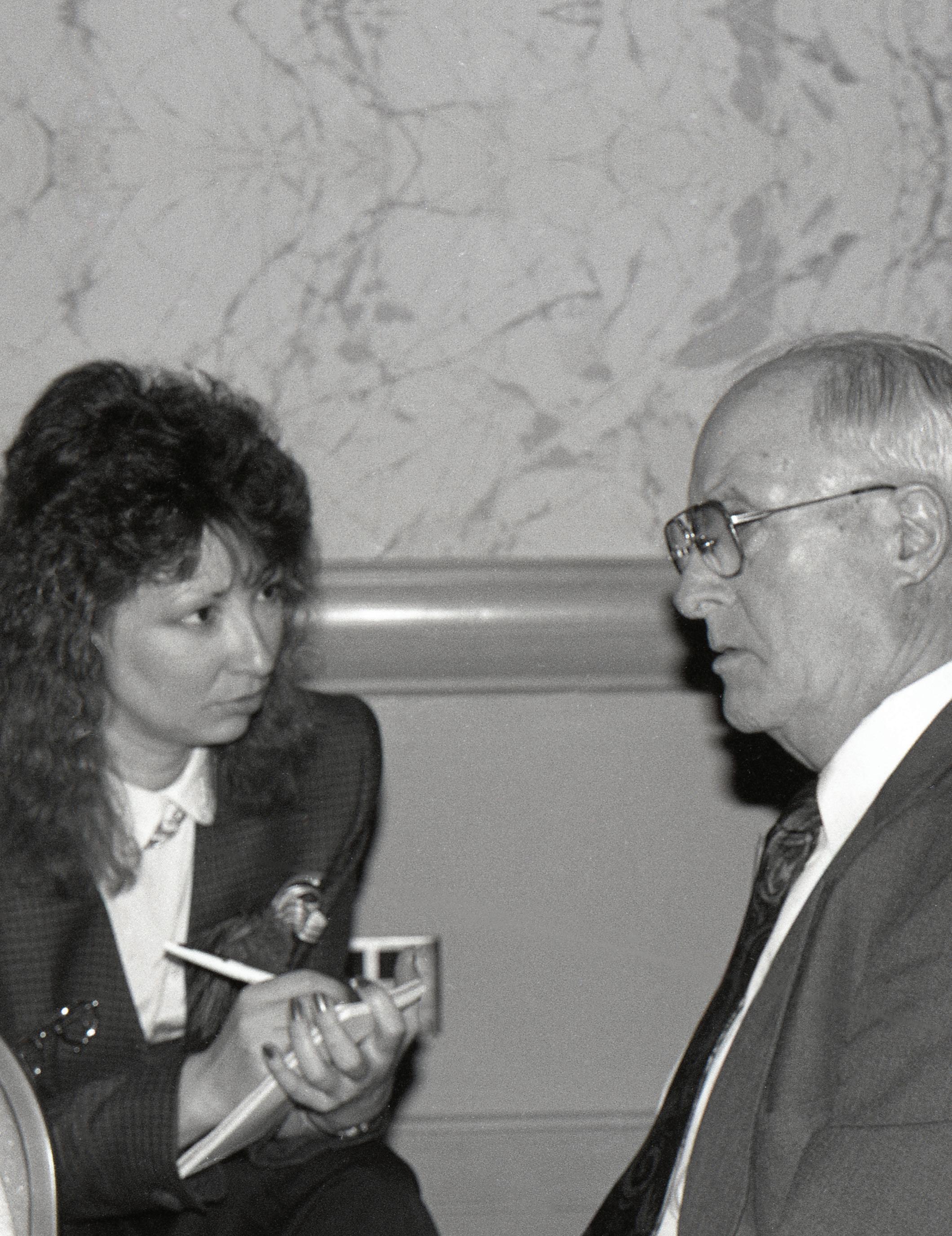




Thirty-nine years ago, I began a journey that ended up defining my lifetime. Just a couple of years out of college, I was hired to write a history book about rural electrification in Indiana and work on a tabloid newspaper called Electric Consumer. I never would have imagined back then that I would make a career of editing that publication and the magazine it later became, Indiana Connection.
Throughout that career, I’ve evolved, both professionally and personally. Not only have I learned about the electric cooperative industry, I’ve learned about the people behind it — the employees, the directors, the consumers. I’ve learned about Indiana. I’ve learned about you. I’ve even learned about me with every one of the 350-plus columns I’ve written. Sharing my musings, stories and informational nuggets with you has been a privilege I don’t take for granted.
That’s why saying goodbye now is one of the hardest things I’ve done. This is my last issue as editor of Indiana Connection. I’m slowing my pace down a smidge by entering the world of retirement. Stephanie Groves will be taking over my role starting with next month’s issue. She shares my dedication to making sure Indiana Connection is a magazine that entertains and informs and connects with you each month. I know you’ll enjoy getting to know her in the months and years ahead.
Before I go, I’d like to thank the talented and hard-working individuals who have worked on Electric Consumer/Indiana Connection through the years. Each one impacted the publication in his or her own way and contributed to its success. I remember and appreciate everyone who’s been part of our editorial team and am so thankful we were able to work together, collaborate and be part of each other’s lives — some for just a few months, and some, like my friend, Senior Editor Richard Biever, for over three decades. Thank you all for not only sharing your talents — but also the laughs and sometimes the tears.
I feel truly blessed to have been able to work for you, the readers, all these years. I’ll cherish the memories!
Giveaway: Enter to win an IEC prize pack featuring a 32 oz. stainless steel tumbler, bluetooth tracker, power bank, notebook, screwdriver, ice cream scoop, cord organizer, bottle opener and measuring tape. Visit indianaconnection.org/ talk-to-us/contests or send your contact information to the address below. The deadline to enter is Jan. 31.
Three ways to contact us: To send us recipes, photos, event listings, letters and entries for gift drawings, please use the forms on our website indianaconnection.org; email info@indianaconnection.org; or send to Indiana Connection, 8888 Keystone Crossing, Suite 1600, Indianapolis, IN 46240-4606.
VOLUME 72 • NUMBER 7
ISSN 0745-4651 • USPS 262-340
Indiana Connection is for and about members of Indiana’s locally-owned, not-for-profit electric cooperatives. It helps consumers use electricity safely and efficiently; understand energy issues; connect with their co-op; and celebrate life in Indiana. Over 304,000 residents and businesses receive the magazine as part of their electric co-op membership. Member’s cost per issue is approximately 32 cents, plus postage.
CONTACT US: 8888 Keystone Crossing, Suite 1600 Indianapolis, IN 46240-4606 317-487-2220 info@indianaconnection.org IndianaConnection.org
INDIANA ELECTRIC COOPERATIVES OFFICERS:

Randy Kleaving President
Steve McMichael Vice President
Dr. Richard Leeper Secretary/Treasurer
Tom VanParis Interim CEO
EDITORIAL STAFF: Emily Schilling Editor

Richard George Biever Senior Editor
Holly Huffman Communication Support Specialist
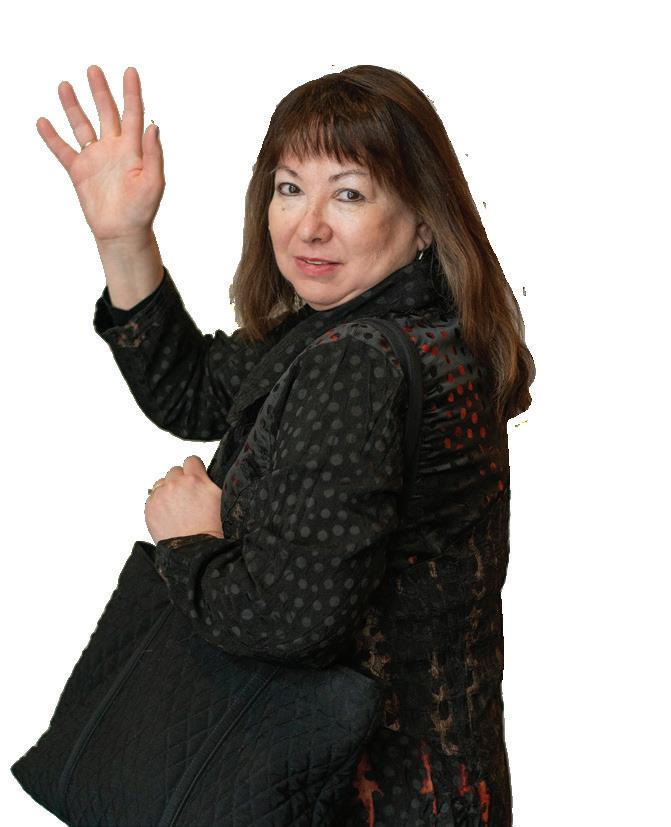
Lauren Carman Communication Manager
Kiley Lipps Graphic Designer
Amber Knight Creative Manager
Mandy Barth Vice President of Communication
ADVERTISING: American MainStreet Publications Cheryl Solomon, local ad representative; 512-441-5200; amp.coop Crosshair Media 502-216-8537; crosshairmedia.net Paid advertisements are not endorsements by any electric cooperative or this publication.
UNSOLICITED MATERIAL: Indiana Connection does not use unsolicited freelance manuscripts or photographs and assumes no responsibility for the safe-keeping or return of unsolicited material.
SUBSCRIPTIONS: $12 for individuals not subscribing through participating REMCs/RECs.
CHANGE OF ADDRESS: If you receive Indiana Connection through your electric co-op membership, report address changes to your local co-op.
POSTAGE: Periodicals postage paid at Indianapolis, Indiana, and at additional mailing offices.
POSTMASTER: Send change of address to: Indiana Connection, 8888 Keystone Crossing, Suite 1600, Indianapolis, IN 46240-4606. Include key number.
No portion of Indiana Connection may be reproduced without permission of the editor.

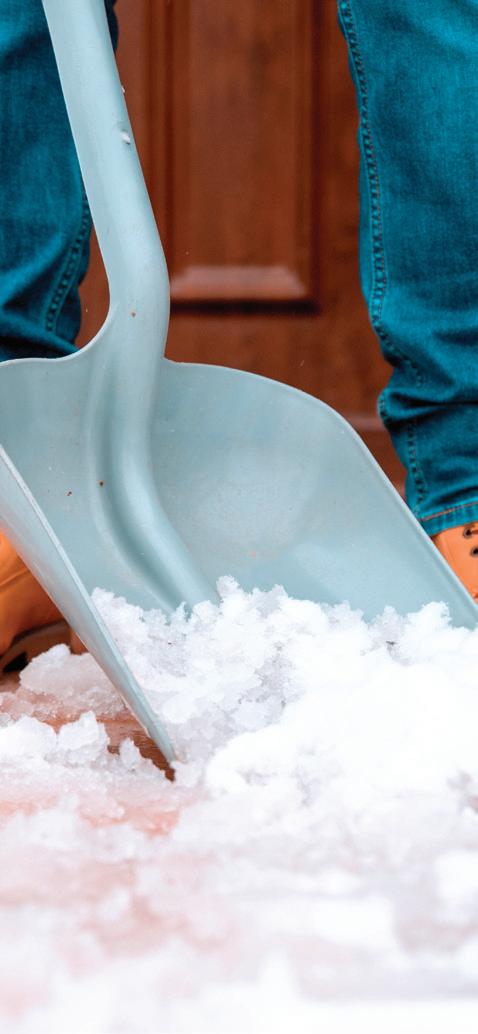
Reporter’s notebook and pen in hand, retiring Indiana Connection Editor Emily Schilling interviews an Indiana REMC director about the myriad of ways coops provide exceptional service to their consumers. The interview took place 30 years ago at the 1992 annual meeting of Indiana’s electric cooperatives.
 PHOTO BY RICHARD G. BIEVER
PHOTO BY RICHARD G. BIEVER
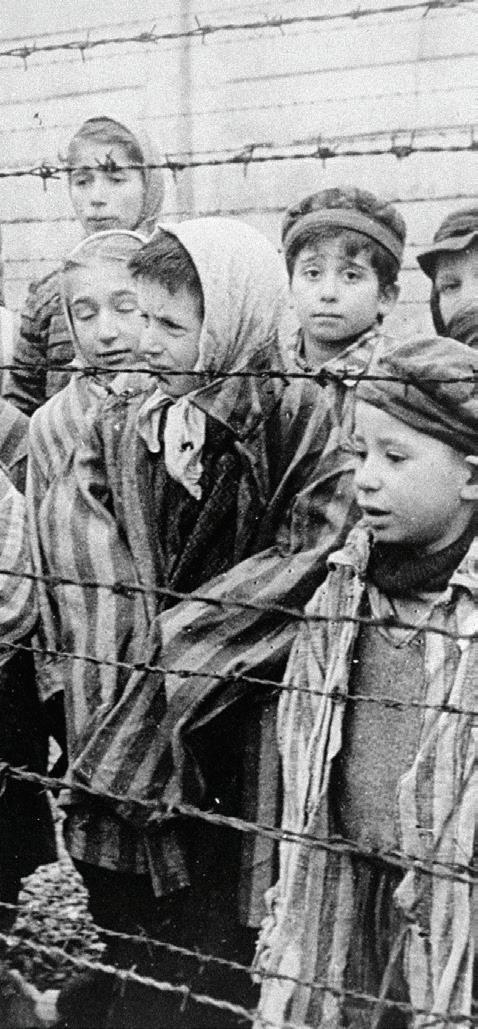

www.kremc.com
CONTACT US
Local: 574-267-6331 Toll-Free: 800-790-REMC
EMAIL mail@kremc.com
OFFICE HOURS
7:30 a.m.–4 p.m., Monday–Friday
ADDRESS 370 S. 250 E., Warsaw, IN 46582
SERVICE INTERRUPTIONS
To report a service interruption after hours, please call 267-6331 or 800-790-REMC.
Tony Fleming, Chairman
Dan Tucker, Vice Chairman
John Hand, Secretary/Treasurer
Terry Bouse
Pam Messmore
Steve Miner
Rick Parker
Loretta Schafer
Todd Smith
This can cause you to reduce standby heat loss by 25% to 45%, saving you 7% to 16% on annual water heating costs.
The Department of Energy rates this project as medium difficulty, meaning most homeowners can tackle this project on their own. You can purchase pre-cut jackets or blankets for about $20 at most home improvement stores.
— U.S. DEPARTMENT OF ENERGYBlue Heron Guest House
10% off a room from November through March. Excludes holidays and is subject to availability.
FOLLOW
Kosciusko REMC’s day-to-day functions depend on the values we’ve been developing since the very beginning. For our members and our employees, what we believe as an electric provider makes a difference. Because we strive to put our community first, our members can trust us with their wholehearted support. We're always looking for ways to foster the well-being of our team, and as a result, our employees enjoy a thriving workplace where impactful connections are part of daily life.

As we move forward into 2023, these are the values we’re strengthening:
• Reliable service: It’s important to us to constantly be improving and repairing our community’s infrastructure and electric reliability. Whether it’s changing out poles, replacing wires, or investing in new technology for automated outage restoration, our members can rest assured that we’re doing everything we can to provide dependable service.
• Industry safety: There can be no shortcuts when it comes to our employees’ safety. We take it seriously and provide training programs and helpful resources wherever necessary.
• Affordable rates: As the cost of living continues to rise, we’re all experiencing financial challenges. Our KREMC team is incredibly efficient as they work to keep your electric bill affordable, despite the fiscal environment. We’re proud to offer one of the lowest electric rates among the cooperatives in Indiana. As CEO of KREMC, I prioritize affordable service for our members, and we will continue to seek out resources to maintain these low rates.
There is never a time that KREMC stops developing as a community-centered cooperative in Kosciusko County. We will always be working to improve our quality of service and open new opportunities for rural neighborhoods.
One of those opportunities is fast fiber internet, where the need for it is strong. Since December 2021, we have connected over 4,500 members to our high-speed internet, and now we’re launching our crystal-clear fiber phone service. Installing fiber in local homes is the largest project our cooperative has taken on since our founding. We’ve far surpassed our goals and will continue to expand this exciting project throughout KREMC’s service territory.
KURT CARVER President and CEO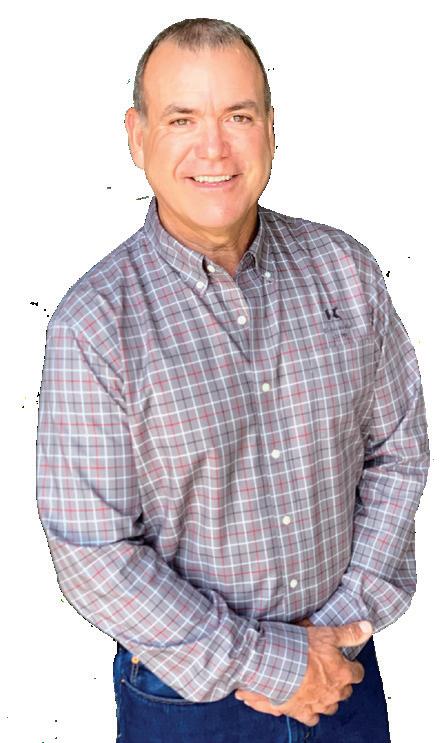
Residential and farm service
Service charge $24.50 per month Kilowatt-hour (kWh) charge @$.0922 per kWh Tracker charge @$0.002904 per kWh
Outdoor Lights*
40w LED $8.75 per month
70w LED $12.25 per month
Electric water heaters 50 gallons or larger:
• Gas to electric replacement — $125
• New construction water heater — $125
• Geothermal desuperheater — $50
HVAC:
• Geothermal system installation — $250
• Air-source heat pump system — $150
• Programmable thermostat — up to $25
Visit www.kremc.com for complete guidelines and restrictions. Additional rebates can be found at powermoves.com.
Now is a time for looking back with gratitude and stepping forward with determination.

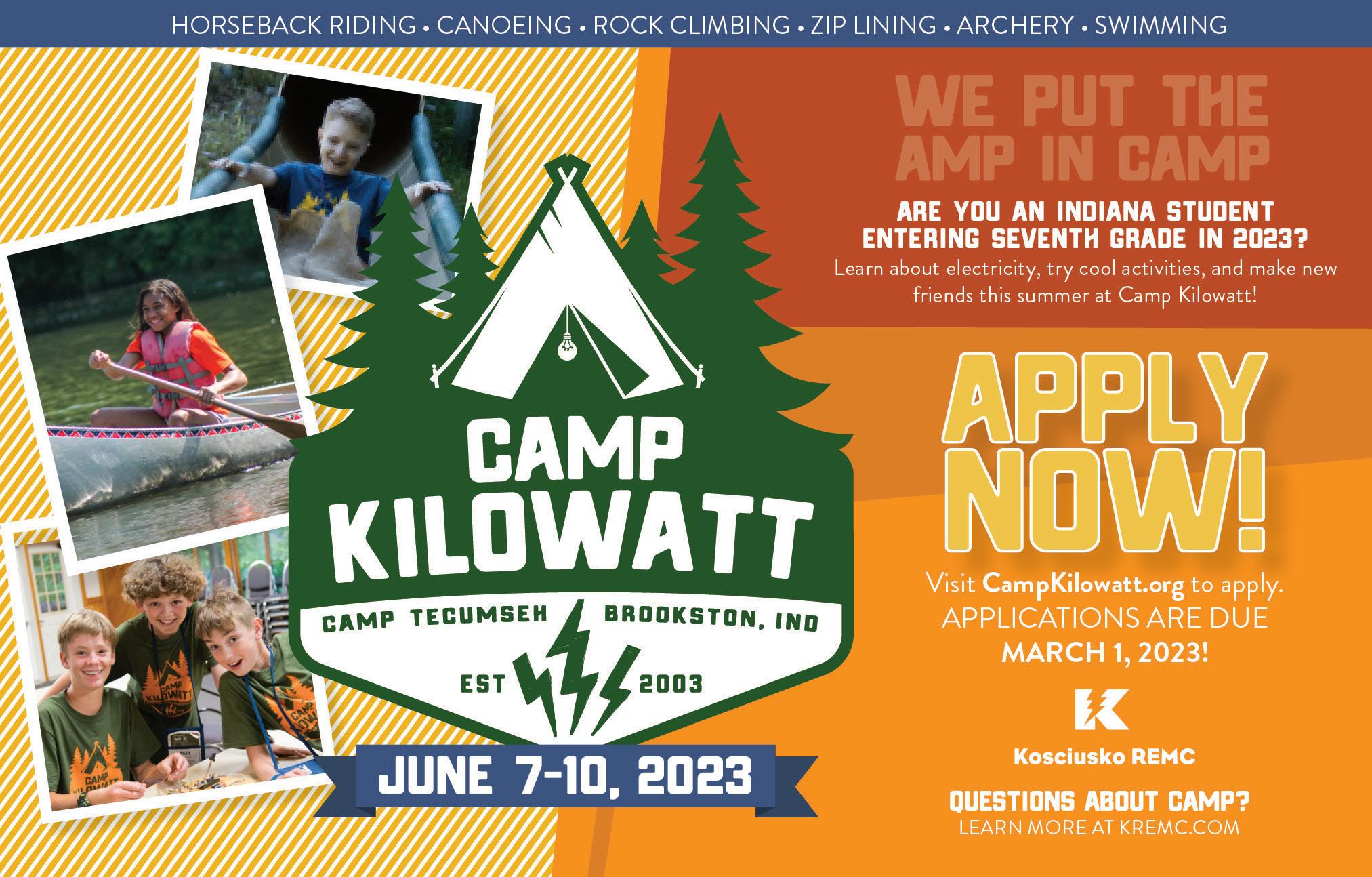
All children have a little artistry in them! Submit your K-12 student’s artwork to the Cooperative Calendar of Student Art contest for a chance to be selected for the 2024 art calendar. To apply and learn more about the contest guidelines, visit indianaconnection.org/for-youth/art-contest and submit your entry before March 24.
If you're a student involved in a 4-H project this year, apply for a $350 scholarship from KREMC. All 4-H students on KREMC lines are eligible. To apply for a 4-H scholarship, fill out an application online and turn it in through email, mail or in our office before May 1.
JOHN H. ANGLIN SCHOLARSHIP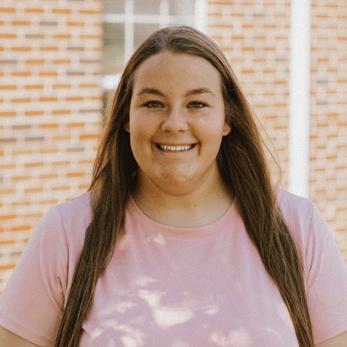
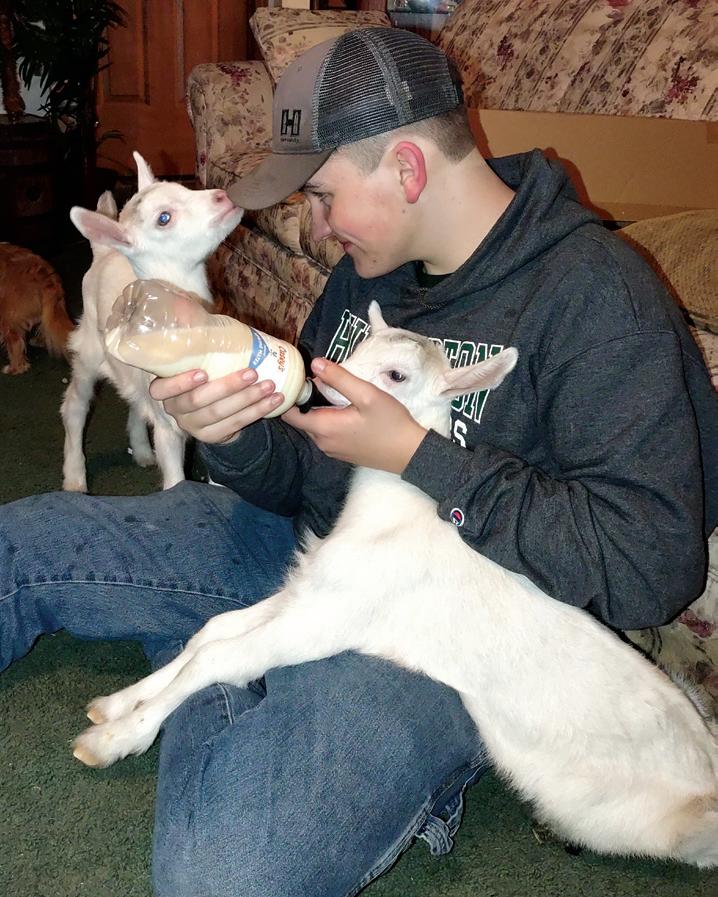
Are you looking for community support as you pursue your college degree? Every year, KREMC awards $1,000 scholarships to 10 students. We love supporting our local students’ education as they work hard to take the next step in their careers and lives. Apply on the KREMC website before May 1 at kremc.com/youth-programs.
You can turn in your application through email, mail, or in our KREMC office: 370 South 250 East, Warsaw.
After filling out an application for the John H. Anglin or 4-H scholarship, register to qualify at our office or at the 2023 KREMC annual meeting. Winners of these scholarships will be chosen by a random drawing and announced shortly after the annual meeting.
If you’ve experienced Kosciusko Connect’s fast fiber internet, you know the difference that an affordable, quality connection can make. We’re excited to present Kosciusko Connect’s new residential phone service. Our phone technology uses Voice over Internet Protocol to deliver a reliable connection through the fiber network. You’ll be making phone calls with clarity and consistency,
featuring anonymous call rejection, call forwarding, and Do Not Disturb. With Kosciusko Connect, your voicemails will be accessible by email, and speed dial and three-way calling will seem effortless.
Learn more about our phone service and how you can get signed up by going to kosciuskoconnect.com and selecting “Residential Telephone” under the “Residential Services” option.
Pay your electric bill with just a few clicks! With Kosciusko REMC’s Quick Pay feature, you don’t even need to log into your account.
Get your account number ready and type it into the Quick Pay form to easily check your electric bill payment off your monthly to-do list. Visit the KREMC online portal to start using Quick Pay.
The next time you visit our office, grab a copy of KREMC’s very own picture book!
This illustrated story follows Mike the Lineman and his friendly electro-bot as they restore power after a storm.
Have fun with Luna and Charlie as Mike helps them learn how to have fun and stay safe during power outages. Students can learn about power outage preparation, bucket trucks and new vocabulary words in this fun book from KREMC!



Electric heat pumps have been around for a long time, and they’re among the most efficient and comfortable ways to heat and cool your home. But now there’s something even better — and it can save you big dollars on your heating bills every winter. Plus, with rebates offered by many local electric cooperatives, you can save even more. It’s called a cold climate air source heat pump. It’s an updated, more efficient version of the traditional air source heat pumps you probably know about. Air source heat pumps contain a condenser, which circulates refrigerant, and an air handler that moves the conditioned air throughout your home. Air source heat pumps essentially pull heat from the air — in the summer the system pulls the warm air from your home and pumps it outside; in the winter, it pulls the heat from the air outside and pumps that heat into your home.
Advancements in compressor technology allow cold climate air source heat pumps to gather up heat at much, much lower winter temperatures. When it’s 47 degrees Fahrenheit or above outside, cold climate heat pumps operate at nearly 400 percent efficiency. That is, they produce nearly four times the energy they consume. And, even when the temperature outside drops to zero, a cold climate heat pump can still operate at about 200 percent efficiency.
That means big savings for co-op members like you. If it costs you $400 to heat your home in a cold winter month with a traditional heat pump, a cold climate heat pump could drop that to $230 — a 43 percent savings.

Plus, just like traditional heat pumps, cold climate heat pumps are great air conditioners. They can efficiently keep your home cool and comfortable when the weather’s warm.
Cold climate heat pumps are available from several manufacturers, and you can check with the Northeast Energy Efficiency Partnership to see if the heat pump you’re considering qualifies for rebates. Or, contact your energy advisor at your local electric cooperative. We’re here to help you choose the system that will keep you comfortable — and keep you saving — all year long.
by Matt Walters Energy Advisor Boone REMC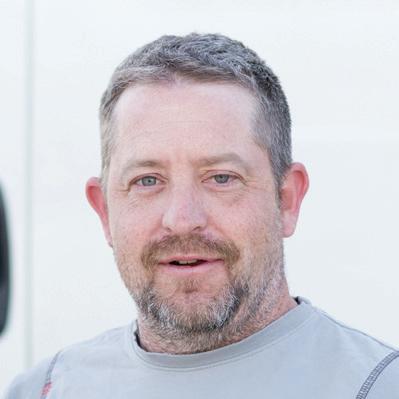

I mused while reading your latest article about writer’s block (November 2022 issue), and how you come up with ideas to write about. For me, and likely many others, the beauty of your subject matter is that you appreciate even the simplest of things that life has to offer. That is a big part of living — being aware of how cool all things are!
In the “day-to-day,” it’s important to observe — fascinating nature, talented people in action, events that influence our world, etc. Heck, today I even marveled at a decades-old ginormous food prep mixer/ stand combo — behind-the-scenes can be pretty amazing! And, yes, the mixer was being used to make a large quantity of mashed potatoes.
Keep up your lovely writings!
Carolyn Pottschmidt Via email
I can’t tell you what a delight it is for me to read your November 2022 article in the REMC magazine! My grandfather, Clayton Mitchell, lived in Houston, Indiana, and worked on this project (of reintroducing the Eastern Wild Turkey to Indiana) in the early ’60s.
When I was a little girl, I remember that he had a green pickup truck with something written on the door. My parents would say, “Granddad works for the state.” The story that was always told was, he trapped grouse and they were traded to the state of Missouri for turkeys.
I can remember spending the night with my grandparents with the promise that I could “run the traps” with Granddad the next day.
On Sundays when we would visit, my dad would always ask what he had in his traps that week. I was always interested to hear and was especially “scared” when he would report an occasional rattlesnake.

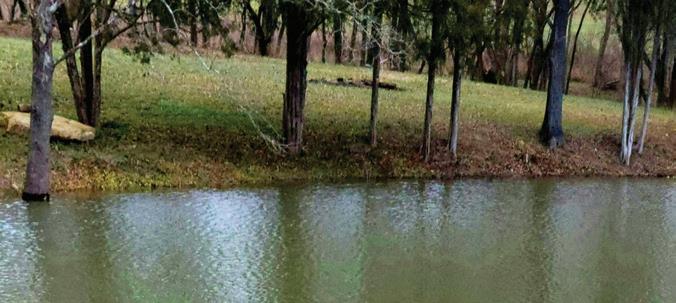
One day when I was running traps with him, he had a covey of quail in the trap — eight to 10 beautiful quail! He boxed them up for me and I brought them back to our farm in Bartholomew County and turned them out.
Thank you so much for connecting some dots for me! Your story reads exactly the way I remember!
Debbie Flohr Via email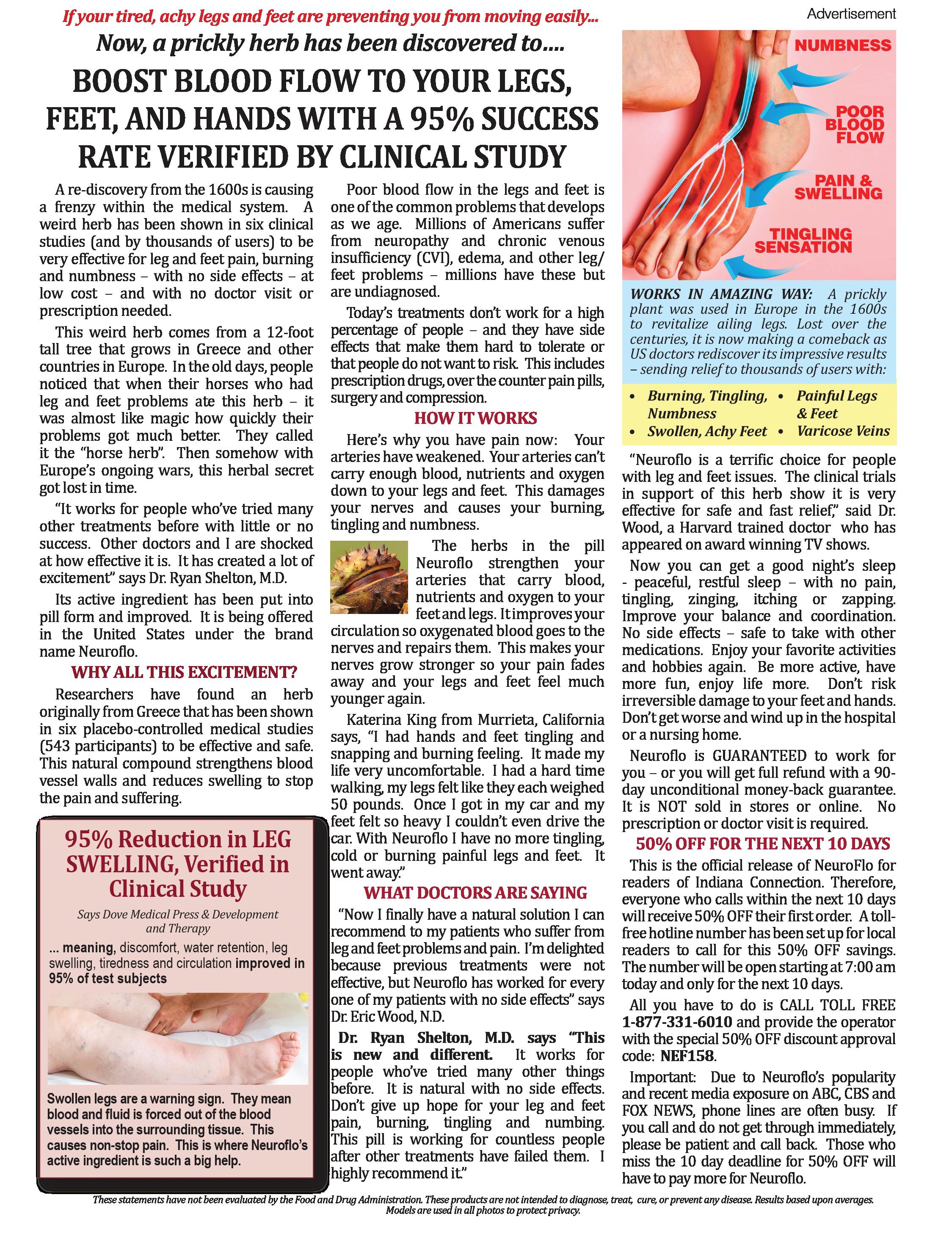
Sharing Indiana’s 45 miles of Lake Michigan shoreline are three counties: La Porte, Porter and Lake. And while La Porte County has the fewest miles of lakefront property, it derives much of its character and even its name from its location on the lake.
La Porte County takes its name from the French term meaning “The Door” or “The Port.” This refers to the county as the gateway to the Great Lakes and its natural opening from dense forests that once covered the areas to the south and east.
Built in 1904, the Michigan City pier lighthouse is a popular symbol of Michigan City and is often described as “Indiana’s only lighthouse.”

An elevated walkway, known as the “catwalk,” was used by lighthouse keepers for 29 years to access the light tower. In 1933, the light was electrified, and in 1939, the U.S. Coast Guard took over the service. The lighthouse was fully automated in 1960. By 1983, the catwalk was in poor condition. The Coast Guard scheduled it for demolition as it was no longer needed. Local residents rallied and succeeded in saving the structure, getting it added to the National Register of Historic Places in 1988. Funds were raised and the catwalk was restored in 1994. The pier is a favorite spot for
fishing and watching sunsets and is frequently painted and photographed by local artists.
The previous lighthouse, built in 1858 on Michigan City’s harbor, is now the Old Lighthouse Museum. The museum has rooms displaying Great Lakes history and artifacts — including a rare Fresnel lens, shipwrecks, La Porte County history, a gift shop and more. It opened in 1973 after eight years of restoration. Nicknamed “Old Faithful,” the structure is also listed on the National Register of Historic Places.
Michigan City boasts many attractions, including breweries and wineries, galleries, boat tours, beaches, gardens, shopping at several centers, a casino and a zoo. The city, the largest in La Porte County, receives a large amount of tourism from Chicago and other nearby cities in the region.
Michigan City is also noted for its proximity to Indiana Dunes National Park which crosses into the western edge of La Porte County. The park runs along
portions of all three of Indiana’s lakeshore counties. And while La Porte County has the least amount of park land of the three, it is home to perhaps the Indiana Dunes National Park’s most renowned landmark, Mount Baldy. Mount Baldy is a 120-foot sand dune at the eastern end of the national park. The wandering dune began forming some 4,000 years ago and is continually changing as a result of natural factors.
The Old Lighthouse Museum is located at 100 Heisman Harbor Road, Michigan City, IN 46360. For information, call 219-872-6133 or visit www. oldlighthousemuseum.org.
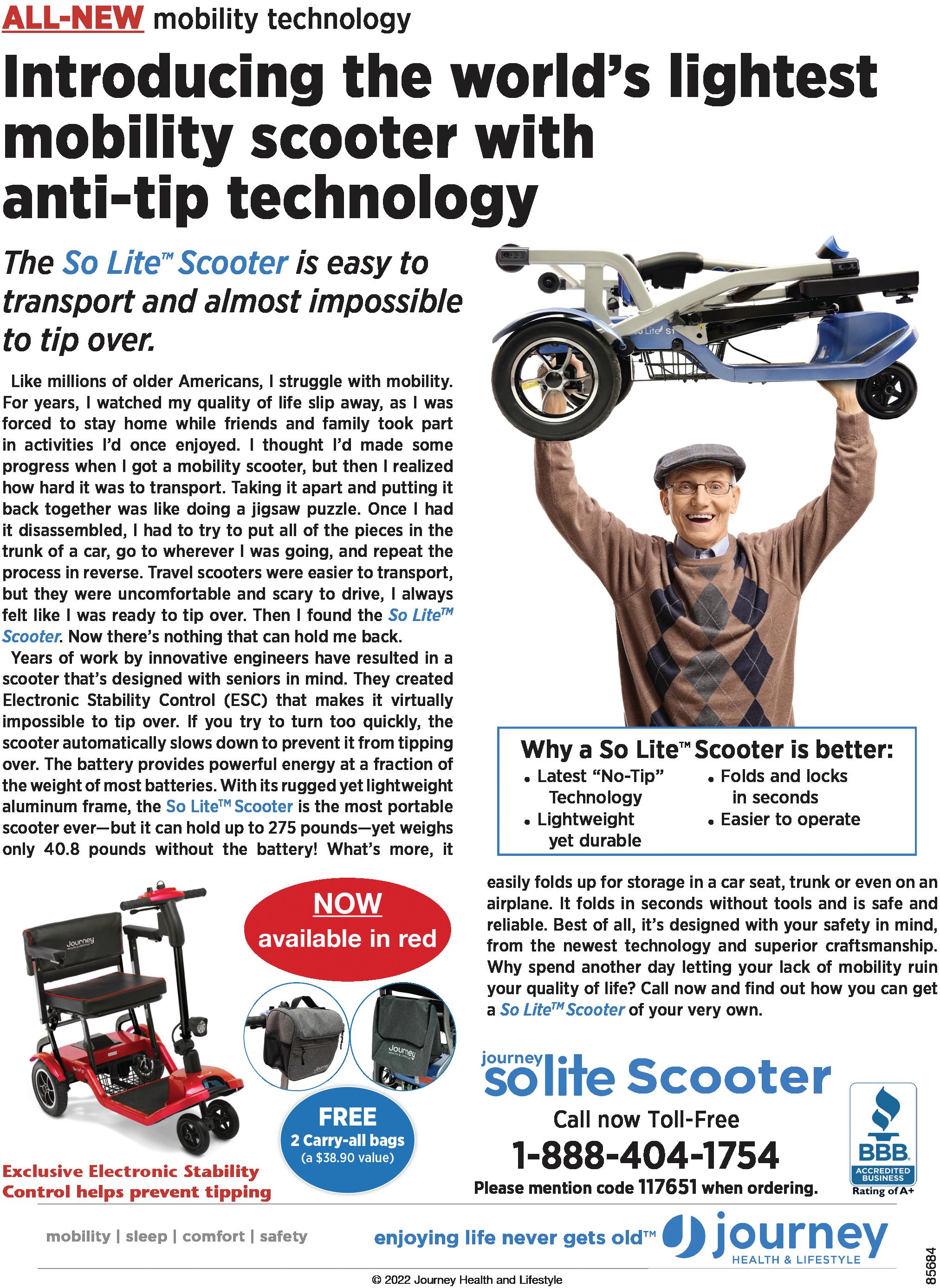
When winter arrives, Hoosiers are never sure of what to expect. Indiana winters include everything from heavy snows, to freezing rain, to ice storms — sometimes all in one day. All of those forms of winter weather can create electrical hazards, warns Indiana Electric Cooperatives.

“Being safe around electricity is a year-round need, but Indiana winters include many dangerous hazards, especially where power lines are concerned,” said Jon Elkins, vice president of safety, training and compliance at Indiana Electric Cooperatives. “Snow and ice often accumulate on power lines, and the added weight may cause them to snap off the power poles, or to cause the poles to break,” Elkins explained. “That can bring power lines into contact with the ground, trees, homes, vehicles and other objects. If people or pets come in contact with a live power line, they can suffer serious injury or even death.”
During dangerous conditions, many residents may be confined to their homes for days at a time. That’s why it is important to have a plan in place, especially during these prolonged outages. To better prepare for a power outage, your electric co-op recommends members keep a storm preparedness kit fully stocked. The basic supplies in this kit should include:
• Bottled water
• Non-perishable food
• Emergency blankets
• First aid kit/medicine
• Flashlight
• Battery-operated or hand-crank radio
• Extra batteries
• Toiletries
Now that your family is prepared for a prolonged outage, what should you do if the lights do go out?
Keep warm air in and cool air out by not opening doors to unused rooms. Do not open doors to the outside unless necessary.
To protect homes’ electrical equipment during an outage, turn off and unplug all unnecessary electronics or appliances. This will keep equipment from being damaged by surges or spikes when the power returns.
Know how long your home healthcare supplies will last and have a backup plan. Plan for a safe alternative source such as a portable battery or generator if electricity is not available. Plan to get to a healthcare facility should your health worsen or if you are going to run out of necessary power.
First, use perishable food from the refrigerator. Perishables should have a temperature of 40 degrees Fahrenheit or below to be safe to eat. Use food from the freezer after consuming refrigerated food.
An unopened refrigerator will keep food cold for about four hours.
A full freezer will keep the temperature for about 48 hours (24 hours if it is halffull) if the door remains closed.
If it looks like the power outage will continue beyond a day, prepare a cooler with ice for your freezer items.
Keep food in a dry, cool spot and cover it at all times.
Throw away any food (particularly meat, poultry, fish, eggs and leftovers) that has been exposed to temperatures higher than 40 degrees Fahrenheit for two hours or more, or that has an unusual odor, color or texture.
Never taste food or rely on appearance or odor to determine its safety. If it has been at room temperature too long, bacteria causing food-borne illnesses can quickly grow.
If you are not sure food is cold enough, take its temperature with a food thermometer. If it is colder than 40 F, you can refreeze it.

If you asked me what my favorite food is, I couldn’t come up with a definitive answer. I love so many foods: grilled sweet corn on the cob sprinkled with seasoned salt, skillet fried chicken, lobster dunked in warm melted butter, futomaki sushi rolls (no avocado), crème brûlée, artichoke and bacon pizza …
Though my list of culinary cravings could probably rival a Cheesecake Factory menu, I could rattle through my all-time favorite restaurants in seconds. The Tamale Place on Indianapolis’ westside is one of my recommendations.

I discovered this gem about 15 years ago, when our publication’s office was located near the tiny take-out eatery. (It’s since moved to a larger — but still relatively small — shop in a mini strip mall west of downtown Indianapolis.) Back then, as a tamale newbie, I tried a different tamale each time I visited, just to savor the various flavors. (The Tamale Place makes an estimated 150,000 hand-tied half-pound-size tamales per year all made with freshly ground masa.)
I was primarily fond of the chicken in red sauce, pork in green sauce, black bean and cheese, and the always amazing dessert tamales. The pineapple and raisin tamale is my all-time favorite dessert tamale flavor (it’s kind of like a pineapple bread pudding wrapped up in a corn husk), with chocolate a close second.
Once I made my way through the tamale offerings, it was time to taste The Tamale Place’s taco and torta selections. I’m so glad I did because there, I found a couple of my all-time favorite meals: the chipotle chicken taco (in a soft corn tortilla) and the chipotle chicken torta. (Yes, I’m a bit obsessed with chipotle chicken!)
The torta is a meal in itself, loaded with melted cheese,
onion, lettuce, pico de gallo, chiles and mayonnaise.
I often get the taco (ask for it with everything — cheese, cilantro and onion — with a lime wedge and salsita on the side) as a combo with black beans, tortilla chips with salsa, and a bottle of Mexican Coke. Since I can’t imagine anything as sublime as my chipotle chicken go-tos I haven’t tried anything else on the torta, taco or even nacho menu, although I hear the steak and egg taco is quite good too.
The Tamale Place is a stand-inline-to-order kind of place and, depending on the time of day, you may have to wait a while to get to the cash register. (The restaurant is that popular!) If you’re there for the tamales, keep in mind the eatery has a limited amount of the various flavors each day and your favorite variety may be gone by the time you’re ready to order (though you can call ahead to reserve the tamales of your choice). While in line, you’ll notice an autographed photo of Guy Fieri of the Food Network’s “Diners, Drive-Ins and Dives” on the wall. Fieri’s visit to The Tamale Place culminated in a “Triple D” episode which aired in May 2011.
If you’re in Indy and want to sample some tasty Mexican food lauded not just by me but by Guy Fieri too, THE place to be is The Tamale Place.
Delicious tamales come out of the steamer ready for hungry guests.
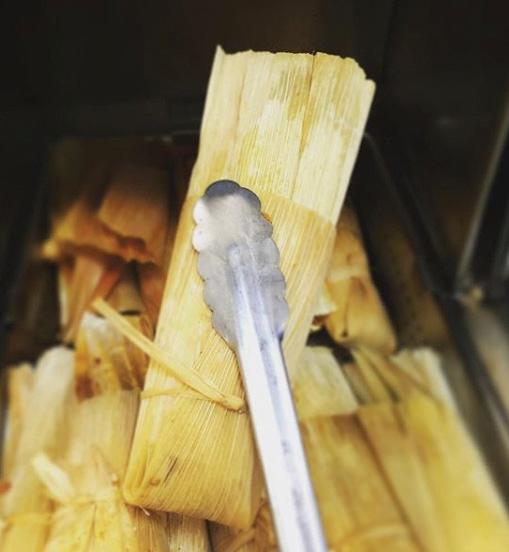
5226 Rockville Road, Indianapolis 317-248-9771
www.thetamaleplace.com
Monday-Saturday, 9 a.m.-6 p.m.

‘

Glenda Sensenig, Cutler, Indiana
1¼ cups milk
2¼ t. yeast
¼ cup honey
4 T. butter, melted
1 egg, room temperature 4 cups flour
1 t. salt
Scald milk. Let the milk cool to 110-115 F and then mix the cooled milk with the yeast and honey. Let sit 5 minutes. In a large bowl, mix 3 T. of the melted butter, the milk mixture, the egg and 2 cups flour. Mix slowly until smooth. Slowly add the rest of the flour and then the salt. Knead for 8 minutes. Let dough rise 1 hour. Punch down and roll out to ½-inch thickness. Fold dough in half and gently seal. Cut dough into 24 squares and let rise until doubled in size. Place rolls on lightly greased baking sheets. Bake at 350 F for 12-15 minutes until golden. Brush with remaining butter. Serve warm with cinnamon butter.
1 cup butter, room temperature
4 t. cinnamon
1¾ cups powdered sugar
BY EMILY SCHILLING, STEPHANIE GROVES AND AMBER KNIGHT BY KILEY LIPPS1 cup non-dairy whipped topping
Beat butter until fluffy. Add cinnamon and powdered sugar. Fold whipped topping into mixture. Store in refrigerator.
FOOD PREPARED PHOTOS
Combine all the ingredients in a small bowl. Stir well. Place sauce in a covered container and refrigerate for several hours or overnight so flavors meld. Stir the sauce a couple of times as it chills. Makes about ¾ cup of sauce.
Bake frozen pie crust according to package directions. Remove from oven and allow to cool for 30 minutes. In a small saucepan over medium heat, whisk together sugar, cornstarch and water. Bring to a boil, then reduce heat and simmer for 5 minutes until thickened. Whisk in strawberry gelatin. Remove mixture from heat and set aside to cool. Add strawberries to the cooled pie crust then pour gelatin mixture over the strawberries. Refrigerate for a few hours until set.

Back in December 1983, Emily Born began what would become a 39-year career writing and editing for this publication.


Magazine writers possess the enviable ability to encapsulate time with every word they write. That’s because their stories and articles often reflect what was going on when they were written. So, as I look back on 39 years at Indiana Electric Cooperatives/Indiana Connection, the articles, headlines and columns I’ve written; the photos I’ve taken; and the stories I’ve edited all tell the story of my career and the years past better than I could on my own.
I joined Electric Consumer (former name of Indiana Connection) as a staff writer in December 1983. The first issue I worked on was the January 1984 issue. My first bylined news article appeared in that issue, a profile of the newly elected president of Indiana Statewide Association of Rural Electric Cooperatives, Inc. (now known as Indiana Electric Cooperatives), Ross Westfall:
ahead
“ While the nation enjoyed the radio adventures of Buck Rogers and Amos and Andy and followed the birth of rural electrics in 3-cents-a-copy newspapers, Ross Westfall spent his nights shoveling coal.
It was 1935 and he was working his way through college scooping lignite in a belching hospital boiler.”
Westfall was an avid reader of Electric Consumer throughout his life. A former teacher, he’d occasionally contact me if a grammar error made it to print. Knowing he was keeping an eye on things always kept me on my toes!
Later that year, I penned a couple of cover stories that showcased some timely topics in the mid-’80s.
In June 1984, my first cover story:
“ How’re you gonna keep ’em down on the farm after they’ve seen an Apple III?
Easy. Because now the whiz kid computer experts have made way for a new breed of terminal wizard — the farmer. And Elsie the cow, Porky the pig and 800 acres of soybeans can only benefit from the new trend.
Though some farmers were using computers back in the early ‘70s, agricultural computing has only programmed its way into the limelight in the past few years. Even with its relatively short history, on-farm computers have changed considerably and face an even more innovative future.”
Back then, personal computers were just coming into their own. To introduce readers to new-fangled tech terms, because “it’s obvious computers are here to stay” (even though floppy disks and CRTs weren’t) we included a sidebar which explained just what “computer” and “program” meant.
In August 1984, I interviewed a Clay County couple living on dioxincontaminated land. They suspected the toxic chemical was behind the mysterious death of their cows, a
Schilling (then Emily Born) interviewed Ross Westfall soon after he was elected president of Indiana Statewide Association of Rural Electric Cooperatives, Inc., in December 1983.recurring skin rash and a story almost too unbelievable to be true.

“ Dime-sized red welts spot Mack McCullough’s feet. His wife, Caroline, suspects it’s his rash creeping up again.
The itchy patches have plagued Mack the past five years. Along with 47 Holstein cows that have died mysteriously, rotting away from the inside out, and shovels-full of dead birds that have fallen from maple and locust trees around the farmhouse, the skin rash may be visible evidence of an unseen enemy at work, they believe.
For the McCulloughs, rural Clay County residents for 23 years, are living on dioxin-contaminated land.
An Environmental Protection Agency soil test of their dairy farm
last November revealed levels from 26 to 180 parts per billion of octadioxin, one of 75 man-made chemicals in the dioxin family. But neither of the McCulloughs, nor the EPA, know much about octadioxin’s hazards.”
In October 1984, Mike Hanley, who was managing editor of Electric Consumer when I was hired, was named editor and I became managing editor.
In May 1985, the publication commemorated the 50th anniversary of rural electrification in Indiana with historic photos, milestones and a timeline, and reader remembrances. This special issue was just one way Indiana’s electric cooperatives celebrated this golden anniversary. We held a statewide electricity-themed art contest and printed a calendar with historic photos, and I wrote a book about rural electrification in Indiana.
My first issue as editor of Electric Consumer was the October 1985 issue. I wrote my first “That Reminds Me” column in that issue:
“ There was going to be a picture of me accompanying my first column so you’d immediately know it was me and not Mike Hanley who was writing it.
Everything was going good until, in the middle of a hectic deadline week, the photographer handed me my 5 by 7 portrait. He was obviously pleased by his studio expertise.

I wasn’t. Through some measure of trick photography, I acquired a dark shadow on one side of my face resembling a half-shaven beard accentuated with a
handlebar moustache. I have many problems, but masculine facial hair is not one of them.”
Note: My photo, sans faux facial hair, did make it into the November 1985 issue.
The publication evolved through the years, from a tabloid newspaper to a “hybrid” style publication (on a whiter, heavier paper) in June 1993, finally to a slick stock magazine in February 2013.
“ This month, Electric Consumer has shed its tabloid newspaper format and has relaunched as a magazine. As you peruse the pages, you’ll find a contemporary design, more extensive use of four color, and expanded energy, food and outdoor life sections.”
Our evolution continued and in March 2019, the magazine’s name was changed to Indiana Connection. My column that month addressed the name change: “As any new parent will tell you, selecting the perfect name is not easy.
Of course, naming a child and naming a magazine are not quite the same thing. But both scenarios usually involve hours of debate, input (both solicited and sometimes unsolicited) from numerous sources, and a long and often ongoing list of pros and cons for each suggestion.
There’s a reason for this arduous process. A name is something you can’t just change on a whim. You live up to it. Make it your own. Make it proud. It stands to reason that it takes time to settle on one that ‘fits.’”
Among the favorite articles I’ve written:
1The “Cook’s Profile” feature we ran from March 1994 to December 2007. Getting to know some of the readers who submitted recipes to our food section through the years was great fun. I’ll always remember their hospitality during our visits to their homes.

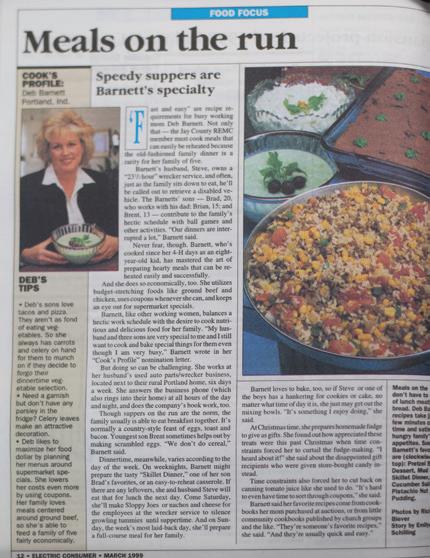

A feature on newly crowned Miss America Katie Stam in 2009 and a followup interview five years later. Stam, who grew up on a farm on Jackson County REMC lines, is just as friendly, personable, well-spoken and humble as you’d imagine a Miss America to be.
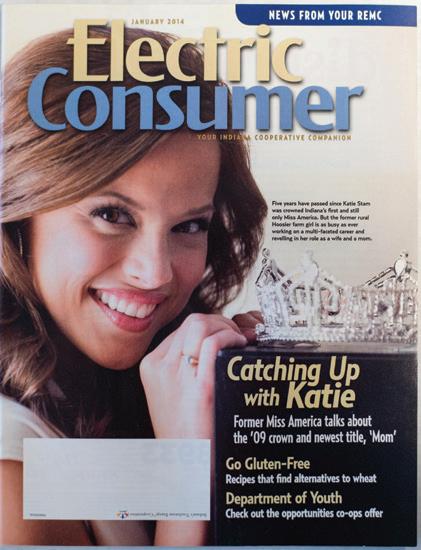
An interview with Mina Starsiak Hawk of the HGTV home renovation series “Good Bones.” I’d met Starsiak Hawk and her mom/business partner/costar Karen E. Laine in 2016 when they spoke at a program I coordinated. Since then, we’d tried to do an article about them. Finally, Senior Editor Richard Biever was able to schedule an interview for the July 2021 issue, and together we had a great conversation with Starsiak Hawk soon after “Good Bones” began its sixth season.
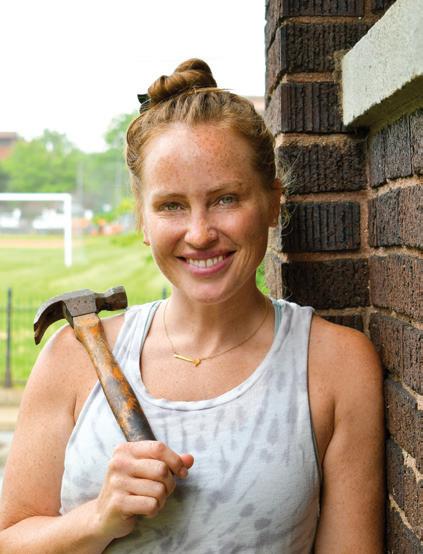
I have several memorable columns. One was about my daughter’s horseriding days, when she gravitated toward a temperamental horse named Tucker and forged a special equine relationship. I also remember a whimsical story about my first boyfriend that I based on a favorite column from a college journalism class. (That relationship lasted one day. We were in kindergarten.) Plus, I enjoyed the Christmas columns I wrote through the years. In my early years,I talked about that season’s unusual or extravagant gifts, then later began giving away some of my favorite things in reader drawings.
Although I’m retiring from the magazine this month, I don’t think I’ll ever stop writing. Ever since I began my journalistic training — and later career — I’ve known writing and editing is what I’ve been meant to do. My dream now is to write a novel. So, if all goes according to plan, you’ll be able to read my work — in book form — sometime in the future.
Since 2009, Indiana Electric Cooperatives has recognized young Hoosiers through the Youth Power and Hope Awards.
The awards program — coordinated by the staff of Indiana Connection magazine — honors a select group of middle school students in grades 5 through 8 who are making an impact on their communities.

The winners for 2022 were acknowledged before a gathering of 500 Indiana electric cooperative leaders and guests at IEC’s annual Recognition Banquet, Dec. 5, in Indianapolis.
In mid-2022, Indiana’s electric cooperatives began seeking online nominations for the awards. Nominees were to give examples of their community service activities; explain why they choose to help their communities and describe how they see their community service evolving in the future. “This year’s nominees impressed the judges with their dedication to making a difference in others’ lives,” Indiana Connection Editor Emily Schilling said. “Thirteen years into the YPH program and we’re still blown away with all the ways our kids are rolling up their sleeves and putting in the work to help others.”
While every student nominee who selflessly serves his or her community deserves a sincere “thank you” and pat on the back, these five students stood out among this year ’s participants. Each winner received a $500 check to assist in furthering their community service activities.
Asher is active in 4-H, where he serves as a member, volunteer and student leader. At St. Michael Church, he is an altar server and participates in several community service projects including a fundraising picnic and a blood drive for the American Red Cross. And at his school, he helps with events such as food drives and a walk-a-thon.
The community project Asher is most proud of is one he does with his family. With the profit earned from selling eggs from the family’s chickens, the Abners create “Birthday Bundles” which are gift bags filled with cake mix, frosting, candles and other items to help those less fortunate celebrate special occasions that often are ignored. So far, the Abners have donated 150 Birthday Bundles to the Harrison County Community Services Food Pantry.
In his award entry, Asher described how he believes his community service will evolve and help him mature as he continues to assist the underrepresented.
Asher and his family are members of Harrison REMC. He is the son of Andrew and Linda Abner.

At school last year, Holland participated in a Young Entrepreneur class. After learning how to use a 3D printer in that class, she made over 100 articulated animal figures along with still figures such as castles and vases. She then sold the items, with the proceeds going to help a local animal shelter.
In addition, she is an active volunteer for Ascension St. Vincent Hospital where she has contributed her time to several events that raise funds for the hospital and its Peyton Manning Children’s Hospital.
As she mentioned in her award entry, her volunteer work has allowed her to “make a positive impact in areas that involve younger people.”
Holland is the daughter of Christopher and Maureen Beck. The Becks are members of JCREMC.
Josie is a member of her school’s FOR-Club which spotlights and encourages good deeds by students. One of Josie’s club projects was creating a “Compliment Board” to spread kindness at school. She raised $500 for the United Fund by leading a snack sale for students. And, Josie and her class also helped clean up her school following a storm. Due to her community spirit, Josie received her school’s Super Sixth Grader award.
Josie has also led a canned food drive and planted flowers at her church. She plants flowers at a local nursing home through her involvement in 4-H.

In her award entry, Josie said helping others has impacted her by showing her the best in herself, the kindness of her community and the outcome of hard work.
She is the daughter of Mark and Susan Hartman who are members of Decatur County REMC.
Henry is a role model and leader through his membership in the Mayor’s Youth Council. The council conducts a camp for fifth and sixth graders each year to promote leadership and making good choices. In addition to supporting the camp, Henry volunteers at the free movie and pool days that the club and local drug-free coalition sponsor.
Henry also assists his church with many events and by serving mass. He is also an active 4-H supporter.

In his award entry, Henry said being involved in his community helps make it a better place to live.
He is the son of Mark and Megan Spreckelson. The Spreckelsons are members of Decatur County REMC.
Elizabeth serves her local community by sending positive letters to nursing homes as part of her Girl Scout troop. She delivers flowers and baking treats through her 4-H club; volunteers at her church; and, like fellow winner Henry Spreckelson, is a member of the Mayor’s Youth Council.
Not only does Elizabeth serve others locally, she has taken her commitment to community overseas through her Girl Scout Silver Award project. She and two of her friends made and sold beaded jewelry which raised over $3,000. That money was used to purchase needed school supplies for children in Kenya.

This summer, Elizabeth was able to visit the African country and work in the same school that benefited from her donation.
When summarizing her community service philosophy, Elizabeth wrote: “When you help others, it helps you to realize how much of an impact you can make.”
Elizabeth is the daughter of Carrie and Johnathan Walden, and she and her family are members of Decatur County REMC.


About 18,000 models of the basketball goal are involved in the recall announced in late October by the U.S. Consumer Product Safety Commission (CPSC) and its manufacturer, Goalsetter Systems Inc., of Evansville, Indiana.
This recall involves all Goalsetter Adjustable and Fixed Wall Mount Series and GS Baseline Series 72-inch, 60-inch, 54-inch, and 48-inch wallmounted goal systems. The basketball goals have a white Goalsetter logo (a white basketball to the left of the word “Goalsetter” printed in the lower left corner of the backboard).

In June 2018, 14-year-old Nolan Gerwels was teaching one of his
The CPSC recently reannounced the recall of Generac® and DR® 6500 Watt and 8000 Watt portable generators for a potential reported hazard: An unlocked handle can pinch consumers’ fingers against the generator frame when the generator is moved, posing finger amputation and crushing hazards.

A wall-mounted basketball goal has been recalled by the U.S. Consumer Product Safety Commission more than four years after one of the 260-pound backboard and support frames dislodged from a wall, fell, and killed a teenager at his home in Granger, Indiana.
younger sisters how to play basketball on an indoor court at the family’s northern Indiana home when the unit fell from the wall and onto the teen. Goalsetter has received three other reports of incidents of the basketball goals detaching from the wall. In one, a consumer sustained severe facial injuries, and in another incident, a consumer sustained a fractured leg.
The recalled goals were sold at SCHEELS stores and basketball equipment stores nationwide and online at www.amazon.com, www. dickssportinggoods.com, www.walmart. com, www.competitiveedgeproducts.com and www.target.com from November 1999 through June 2022 for between
$919 and $2,250.CPSC and Goalsetter are urging consumers to stop using the recalled basketball goals immediately and contact Goalsetter for free removal of the basketball goal with a full refund or a free inspection of the installed wall-mounted basketball goal and free installation of an additional safety bracket.
Contact Goalsetter at 855-951-7460 or online at www.goalsetter.com/ pages/basketball-wall-mount-recall or www.goalsetter.com and click on “SAFETY & RECALL” at the top of the page for more information. Goalsetter is contacting all known purchasers directly.
The firm has received a total of 37 reports of injuries, 24 resulting in finger amputations and five in finger crushing. These portable generators were previously recalled in July 2021. The generators have gasoline-powered engines that are used to generate electricity for use as backup power. The portable generators have two wheels and a single, U-shaped, two-grip, flipup pin-lock handle to help move the generator. The units were sold at major home improvement and hardware stores nationwide and online, including Ace Hardware, Amazon, Costco, Do it Best,
Home Depot, Lowe’s Stores, Napa Auto Parts and True Value, from June 2013 through June 2021 for between $790 and $1,480.
Contact: Generac at 844-242-3493 or online at www.generac.com/ handlespacer or www.generac. com and click on Important Safety Information for more information.
As a service to our readers and to promote electrical safety, here is a recent recall notice provided by the U.S. Consumer Product Safety Commission. Visit www.cpsc.gov/en/recalls for full details of this recall and for notices of many more.
Previously recalled portable generator has additional concern
Center founded by Holocaust survivor who forgave — but wanted no one to ever forget
Eighty years ago this spring, the Nazi regime in Germany, already in the throes of its genocide against millions of people it deemed undesirable and a World War it instigated, began conducting perverse pseudoscientific medical experiments on sets of twins. Among those pulled from the population bound to the concentration camps in the spring of 1944 and forever severed from their mother for the experiments were 9-year-old Eva Mozes and her twin sister Miriam. Eva and Miriam became guinea pigs of the massive, inhumane experimentation program headed by Dr. Josef Mengele at Auschwitz-Birkenau — a program aimed solely at thousands of twins, many of them children.

When the concentration camp was liberated in January 1945, the Mozes girls were among the survivors. They suffered physical complications throughout the rest of their lives from the year they were subject to the Nazi experiments.
In 1960, Eva married American Michael Kor, also a Holocaust survivor, and settled in Terre Haute.
In 1984, Kor founded CANDLES (an acronym for “Children of Auschwitz Nazi Deadly Lab Experiments Survivors”), and, in 1995, opened the CANDLES Holocaust Museum and Education Center in Terre Haute. Its mission was to prevent prejudice
and hatred through education about the Holocaust. Kor publicly forgave the Nazis to free her from the pain, anger and sorrow she endured, but she wanted to make sure no one ever forgot the evil it brought to the world. It is the only museum in Indiana solely dedicated to Holocaust education.
CANDLES is a place to reflect and learn. Docents are available for selfguided tours to offer more information and answer questions. The average tour time is about two hours to view the museum in its entirety.
The main exhibit is “Dimensions in Testimony Interactive Theater.” The exhibit is like a conversation with a Holocaust survivor. Created through specially recorded interviews with 12 Holocaust survivors, viewers can ask questions of the individual survivors about their life experiences and hear responses in real-time conversation. Visitors can hear their stories about topics such as life before the war, hiding, experiences in concentration camps, life after the war, forgiveness, family and more.
For each interview, the survivor answered as many as 2,000 questions. Using advanced language processing technology, the program matches questions viewers pose with the survivor’s most relevant response. Newly developed display techniques enable the interactive installation
to be placed in museums, national monuments or other locations, with emergent applications for mobile devices.
While the museum is open to all ages, the material is most appropriate for ages 12 and older. For children ages 7-11, the museum recommends that parents, guardians and educators talk with children ahead of time and then take cues before and during the visit on how the subject matter may be affecting each child. The museum does not recommend bringing children under the age of 6.
Despite her age, Kor made annual trips to Auschwitz to tell others about her childhood experiences. During Kor’s 2019 trip, she died unexpectedly on July 4 near Auschwitz in Kraków, Poland. She was 85 years old.
But Eva Kor’s legacy and the educational trips in her footsteps continue. This year’s trip will be June 17-25, and registration closes March 1. Visit the museum’s website for more information.
CANDLES Holocaust Museum and Education Center
1532 S. Third Street
Terre Haute, IN 47802
candlesholocaustmuseum.org 812-234-7881


